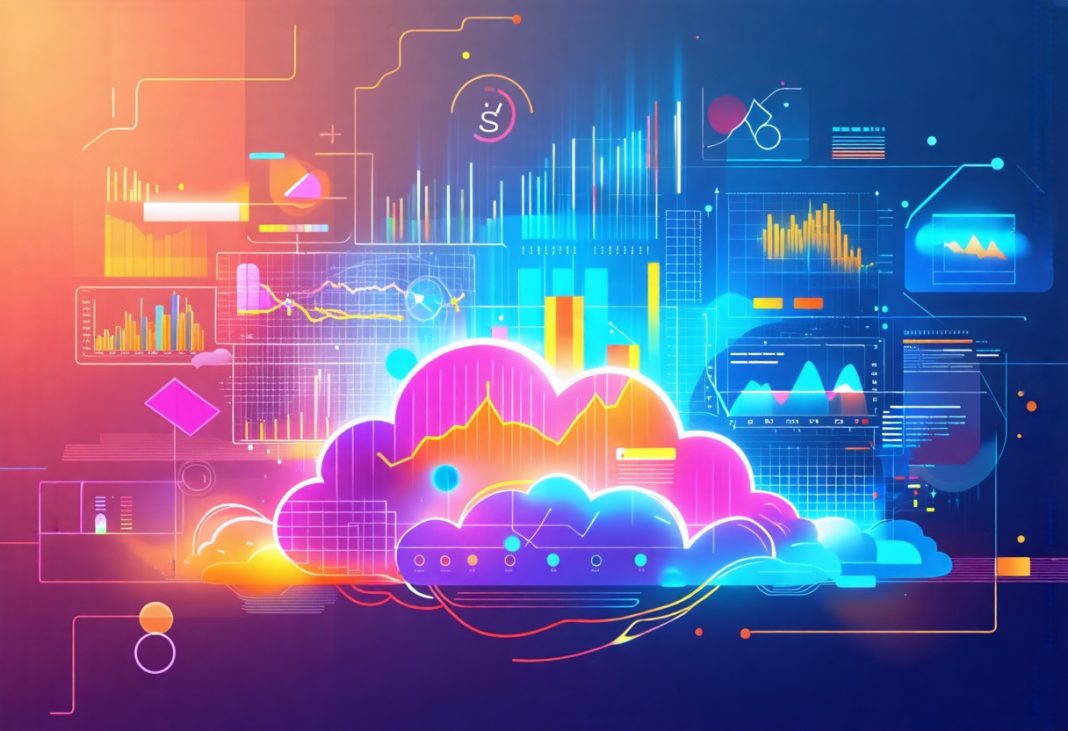The future of data analytics worldwide is characterized by a growing demand for skilled data analysts across various sectors and the integration of advanced technologies like AI and machine learning. This evolution will enhance decision-making processes, as organizations increasingly rely on data-driven strategies for their operations.
1. The Evolving Demand for Data Analysts
The demand for data analysts is experiencing a significant surge, reflecting changes in various sectors that rely heavily on data-driven decisions. Job openings for data analysts are predicted to grow by 25% by 2030, illustrating a robust market for these professionals. Here are some key insights into this evolving demand:
- Diverse Industries: Data analysts are sought after in numerous fields including healthcare, finance, marketing, and retail. Each industry utilizes data analysis to improve efficiency, understand customer behavior, and drive strategic initiatives.
- Technological Integration: With advancements in tools like Google Analytics, Google Tag Manager, and Google BigQuery, these professionals step into roles that require proficiency in these technologies, enhancing their ability to derive actionable insights from large datasets.
- Data-Driven Decision Making: Organizations increasingly prioritize data-led strategies. This shift necessitates a skilled workforce capable of transforming raw data into valuable insights that shape business strategies.
- Roles and Responsibilities: Future roles include:
- Collaborating with cross-functional teams to implement data solutions.
- Developing dashboards and reports using platforms like Looker Studio to visualize performance metrics.
- Conducting trend analysis to support marketing and operational strategies.
- Educational Growth: As demand increases, educational institutions are offering more programs tailored to data analytics. This prepares the upcoming workforce to meet industry requirements.
- Remote Opportunities: The evolution of remote work has opened doors for analysts to work across borders, leading to a more competitive job market and a wider talent pool.
The future landscape for data analysts is poised for growth, driven by technological advancements and an increasing reliance on data to fuel decision-making processes across various sectors.

2. Technological Integration in Data Analytics
The landscape of data analytics is undergoing a transformation with the integration of technologies like Artificial Intelligence (AI), Machine Learning (ML), and the Internet of Things (IoT). These technologies are shaping the future of how data is collected, analyzed, and utilized for decision-making.
- Artificial Intelligence: AI systems are increasingly capable of processing vast amounts of data and providing insights that were previously unattainable. They automate routine analyses, allowing human analysts to focus on strategic tasks. For instance, a report indicates that AI-driven analytics can increase operational efficiency by up to 30%.
- Machine Learning: ML algorithms learn from data patterns and improve over time. Businesses are utilizing ML to predict customer behaviors, optimize supply chains, and identify market trends. Organizations employing ML techniques reported an average revenue growth of 10-15% within the year.
- Internet of Things: The rise of IoT devices generates an unprecedented amount of data. These devices collect real-time information, facilitating faster and more informed decision-making. A study estimates that by 2025, there will be over 75 billion connected devices globally, amplifying the volume of data available for analysis.
- Data Integration: Integrating AI, ML, and IoT leads to cohesive data ecosystems. This integration enables businesses to harness data from various sources, yielding comprehensive insights that enhance strategic planning. Research indicates that businesses that integrate these technologies effectively see an improvement in decision-making speed by 50%.
- Predictive Analytics: The merger of these advancements facilitates predictive analytics, enabling organizations to foresee future trends. By leveraging historical data and real-time inputs, businesses can anticipate market shifts, enhancing their competitive edge.
- Enhanced Visualization: Tools like Looker Studio create advanced data visualizations, making it easier for stakeholders to understand complex data sets and make informed decisions. Reports suggest that effective visualization can boost stakeholder engagement by 70%.
The integration of AI, ML, and IoT within data analytics is not just a trend but a necessary evolution. Organizations that adapt and utilize these technologies will enhance their decision-making processes and gain a substantial competitive advantage in the global market.
3. Advancements in Data Processing
Emerging technologies are reshaping how organizations process data, leading to improvements in efficiency and accuracy. Key advancements like quantum computing and automation are at the forefront of this transformation.
- Quantum Computing: This technology harnesses principles of quantum mechanics to process information much faster than traditional computers. Quantum computers can analyze vast datasets in minutes, which may take classical computers thousands of years. This speed enables organizations to derive insights rapidly, helping them stay ahead of the competition.
- Automation: Automation is streamlining data processing workflows. By applying artificial intelligence and machine learning, tasks that once required human intervention can now be completed almost entirely by machines. This shift reduces errors and frees up human resources for strategic decision-making processes.
- Real-time Data Processing: The capability to process data in real-time allows businesses to make timely decisions. Technologies supporting streaming data processing are gaining traction, allowing organizations to act on insights as events unfold, thus ensuring responsiveness.
- Advanced Data Integration: New tools can integrate data from multiple sources, simplifying data management. This integration enables a more comprehensive view of customer behavior and business performance.
- Edge Computing: As the Internet of Things (IoT) expands, edge computing allows data to be processed closer to the source. This reduction in latency improves speed and supports better decision-making, especially in industries where time-sensitive data is critical.
- Cost Efficiency: Overall, these advancements enhance accuracy and processing speed but lower costs associated with data management. Companies investing in these technologies find significant returns, with some reporting up to a 30% reduction in data handling expenses.
These advancements signal a shift towards more intelligent, robust, and adaptable analytics environments. Organizations leveraging these technologies will gain a competitive edge in navigating the complexities of data analytics.

4. The Rise of Data Democratization
The emergence of data democratization is transforming how organizations approach data analytics. This trend empowers non-technical users to engage with data directly, enhancing collaborative decision-making across teams.
Key highlights include:
- Empowerment of Non-Technical Users: Tools like Google Analytics and Looker Studio simplify data access, allowing individuals without advanced technical skills to extract insights.
- Cultural Shift: Organizations are moving towards a more inclusive environment, where data is seen as an asset available to everyone, not just data scientists or analysts. This encourages collective intelligence and diverse perspectives in decision-making.
- Informed Decisions: Data democratization fosters a culture of informed decision-making, reducing reliance on a few key personnel. When more employees can analyze data, reactions to market changes can happen faster.
- Training and Support: Companies invest in training programs to help employees improve their data literacy. Recent reports indicate that about 50% of organizations have implemented initiatives to boost data skills among staff.
- Enhanced Collaboration: An open data environment promotes teamwork. Teams can share insights and strategies, improving overall business outcomes with a unified approach to data.
- Real-Time Insights: With tools designed for easy use, organizations can tap into real-time data analytics. This flexibility allows for quick adjustments that align with emerging trends and consumer needs.
By prioritizing data democratization, businesses unlock the potential for innovation and competition in an evolving landscape. This strategic focus paves the way for a future where everyone in an organization can contribute to data-driven success.

5. Navigating Data Governance in a Complex World
In an era where data continues to multiply, ensuring effective data governance becomes a priority for organizations. This ensures that data is utilized responsibly and ethically. With the growing complexities surrounding data analytics, robust governance frameworks are indispensable. Here’s what matters in navigating this intricate landscape:
- Data Ownership and Accountability: Assigning clear ownership of data reduces ambiguity. Establishing responsible roles helps ensure data integrity and reduces the risk of misuse.
- Compliance with Regulations: Regulations such as the GDPR and CCPA place demands on how organizations handle personal data. Adhering to these laws promotes ethical data use and builds trust with stakeholders.
- Data Quality Assurance: Maintaining high standards of data quality is key. Implementing regular audits, such as a Google Analytics Audit or Tag Manager Audit, helps identify inconsistencies and rectify issues before they escalate.
- Security Measures: Protecting data from breaches is paramount. Utilizing techniques such as Server-Side Tracking and ensuring secure access controls are essential in safeguarding sensitive information.
- Ethical Use of Data: Organizations must prioritize ethical considerations in their data initiatives. This involves being transparent about how data is collected and used, ensuring users are aware of their rights.
- Continuous Training and Awareness: As data governance policies evolve, ongoing training for employees is vital. This keeps staff updated on best practices and helps them understand the importance of compliance.
- Implementation of Advanced Tools: Investing in solutions like a Customer Data Platform (CDP) allows organizations to integrate user data seamlessly, improving analytical capabilities while maintaining governance standards.
The complexities of data governance can challenge organizations, but by establishing strong frameworks and investing in the right tools and practices, they can manage these challenges effectively. Embracing a culture of data responsibility will lead to sustainable analytics success.

FAQ’s
What is driving the demand for data analysts?
The demand for data analysts is rising due to the increasing reliance on data-driven decisions across sectors such as healthcare, finance, marketing, and retail. Job openings for data analysts are projected to grow by 25% by 2030, highlighting a strong market for professionals in this field.
How are technological advancements impacting data analytics?
Technological advancements like Artificial Intelligence (AI), Machine Learning (ML), and the Internet of Things (IoT) are transforming data analytics. These technologies enhance data collection and analysis, leading to better decision-making and operational efficiencies. For instance, AI can automate routine analyses, allowing analysts to focus on strategic tasks.
What role does data democratization play in organizations?
Data democratization empowers non-technical users to engage with data directly, fostering a culture of informed decision-making and collaboration across teams. With tools like Google Analytics and Looker Studio, organizations enable employees to analyze data easily, resulting in faster reactions to market changes and improved business outcomes.
How are organizations managing data governance?
Organizations focus on establishing clear data ownership, complying with regulations, ensuring data quality, and implementing security measures. This includes conducting audits to maintain data integrity and investing in advanced tools to support data governance practices, promoting responsible and ethical use of data.
What are the benefits of advancements in data processing?
Advancements such as quantum computing and automation enhance data processing by increasing speed and accuracy. Real-time data processing allows businesses to make timely decisions, while advanced integration tools simplify data management, all contributing to greater cost efficiency and improved operational effectiveness.
What trends can we expect in the future of data analytics?
The future of data analytics features continued technological integration, a focus on data literacy and democratization, and robust data governance frameworks. Organizations will increasingly rely on predictive analytics to anticipate market trends, enhancing their competitive advantage in a data-driven landscape.




